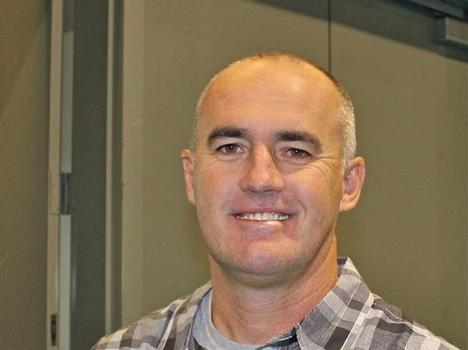Billabong held its annual shareholder meeting in Australia yesterday and executives shared some interesting details about the reasons behind its retail strategy, how retail is performing and how business is going in general since the company’s fiscal year ended at the end of June.
Below are some highlights from the address by CEO Derek O’Neill, including an update on business performance in the U.S., Australia and Europe.
This information comes from a transcription of the address provided by Billabong. I added headings to break up the text.
Click here to read highlights from Chairman Ted Kunkel’s address, where he discusses the thinking behind Billabong’s retail strategy and provides an update on how the retail integration is going.
Billabong CEO Derek O’Neill
Overall, the business in the first quarter generally performed to internal expectations. In revenue terms, total sales for the Group to 30 September 2011 were up 24.7% over the same period in the prior year in constant currency terms. Excluding acquisitions, Group sales revenue was up approximately 6% and the business remains on track to deliver strong underlying EBITDA growth in constant currency terms in the 2011-12 financial year.
I can advise that the vertical margin contribution that the Group anticipated from the move deeper into retail is starting to become apparent, so that gives us confidence that the direct-to-consumer strategy is sound.
U.S. business trends
Our largest sales territory, the United States, has continued to perform well, in particular within company owned retail. The Group has seen same store sales growth for the first quarter of 6.4%, with the month of September up a strong 9.0%. The Group has also experienced quite a stable environment in the wholesale channel, particularly among the smaller specialty retailers.
Australian business trends
There are some similarities in Australia, with the smaller wholesale specialty account base performing quite well. Overall, it is interesting to note that retail sales in areas including Sydney remain reasonably weak, as does the Group’s lower-margin outlet store business.
It is encouraging, however, that the areas where the Group has been investing – the full-price direct-to-consumer channel, which includes company owned bricks-and-mortar retail and online business – generated positive comparable store sales growth in the first quarter.
Overall, the Group’s direct-to-consumer business recorded positive comps around 3% to 4% in the first quarter and is beginning to see some vertical margin flow through as summer has presented the first opportunity where the Group has had full control of the selection of products on the floor in acquired retail businesses.
While talking about growth, I should indicate that the sales revenue contribution from the Group’s online business – being SurfStitch and other banners – is expected to be in the range of 7% of overall Australian sales in the current financial year. This shows that Australians are confident to shop at proven and trusted domestic online platforms.
Moving back to bricks and mortar retail, another early trend of note in Australia is that the small number of acquired retail stores that have undergone a refit are generating double- digit increases in sales per square metre.
I have recently been through a number of stores and I have found the Billabong Group’s ranges to be among the strongest I have seen and, while the Group is still dealing with the final parts of the integration of retail warehouses and IT platforms, this places the business in a good position heading into the important retail months of November, December and January.
See Page 2 for more about Australia, and details about Europe and Asia
I should point out that the family brand share in all of the Group’s acquired retail operations has been lifting and this is leading to better profitability for the business. So the direct-to-consumer business model the Group is pursuing is starting to benefit the business. I do realize that the market often has a short term focus on performance, but the Group is working on longer term outcomes and those should start to become apparent in the current financial year.
As a final note on Australian retail I wanted to let you know that the Group has appointed an executive to oversee the performance of the Group’s domestic banners. Chris Athas, one of the country’s leading authorities on youth retailing and the founder of the Group’s Surfection retail banner, has accepted the role of head of Australian retail. It is an exciting appointment and I welcome Chris and look forward to his contribution.
Asia business trends
Looking elsewhere, the Group’s business in Asia continues to perform strongly, particularly in Japan, which is recovering well from the tragic earthquake and tsunami of March 2011.
European business trends
In Europe, the Group continues to see solid revenue growth year to date, although margins have softened slightly due to higher product input costs from earlier in the year. As investors are no doubt aware, there is great uncertainty about the economic fundamentals of several European countries so – despite the continued growth in sales – the Group remains cautious in our outlook for this region until greater clarity emerges.
Overall outlook
As identified at the time of the full year results, I remind shareholders of the significance of the December and June trading periods and their weighting in our full year results. Both of these months, which represent the peak of Christmas trading in company owned retail stores worldwide and key product deliveries windows in the northern hemisphere, are very important to the overall performance of the Group.
So, overall, I can reiterate that the Group is performing to plan and anticipates strong underlying EBITDA growth in constant currency terms in the current financial year.






